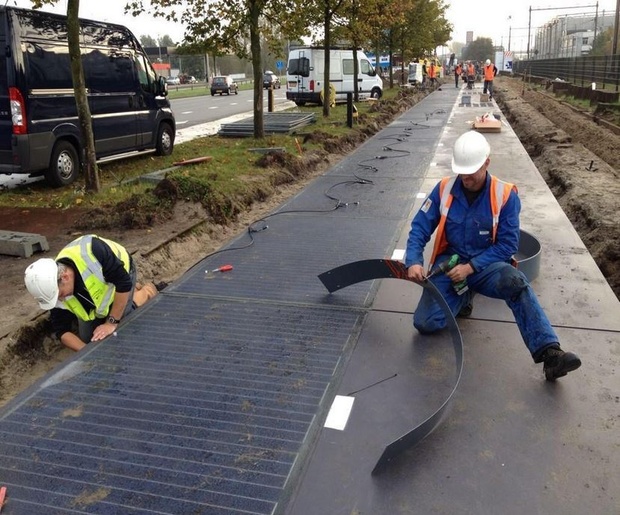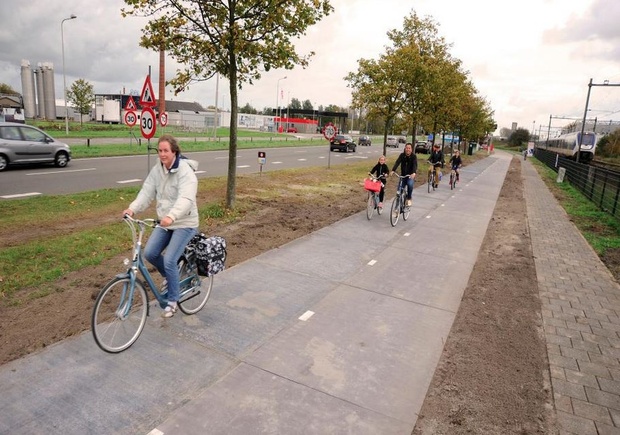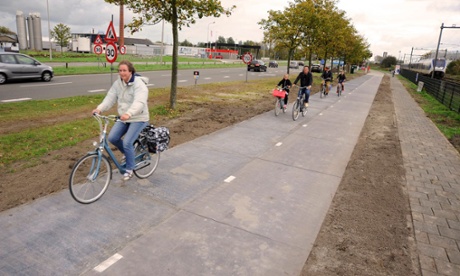The world’s first solar-powered bike path has officially opened on November 12 in Krommenie, a town northwest of Amsterdam.
Riders will be able to hop on at one end and then, after a few seconds of pedaling, dismount at the other. Being a pilot project, the lane is only 70 metres long (though it will stretch to 160 metres when finished). The SolaRoad will convert the sun’s energy into electricity for the grid. The so-called SolaRoad is the result of a collaboration among the private sector, government, and academia.

The pilot road of just a hundred metres consists of concrete modules each of 2.5 by 3.5 metres. Solar cells are fitted in one travelling direction underneath a tempered glass top layer which is approximately 1-cm thick. There are no solar cells on the other side of the road and this is used to test various top layers. In time, the solar power from the road will be used for practical applications in street lighting, traffic systems, electric cars (which drive on the surface) and households.
Visually, the SolaRoad kind of looks like the glassy cooking element on an electric stove. It is outfitted with a friction-granting surface, so riders will not slip around on it like pinballs. The non-adhesive finish will also help to keep the surface clear and guarantee exposure. At the moment, the road is capable of supplying power for three households.
Nevertheless, because it cannot be angled toward the sun, it is less efficient than solar panels which mean that the panels produce roughly 30% less energy than those fixed on to roofs. But as the technology advances, these problems might diminish.

Dr. Sten de Wit from SolaRoad, the consortium behind the project, envisages that solar roads could eventually be used to power the electric vehicles that use them.
“Electric vehicles are on the rise, but are not really a substitute until the electricity they use is generated in a sustainable way. Roads can generate power right where it is needed,” de Wit explains in a publication for the contract research organisation TNO. “Sensors gathering information about traffic circulation can help improve traffic management, or even allow automatic vehicle guidance,” de Wit added.
Scientists are to monitor the path in its current state for three years to conduct various tests on it. The Netherlands Organization for Applied Scientific Research (TNO) believes that eventually, as much as 20 percent of the Netherlands’ 87,000 miles of road could effectively be made of solar panels, helping to power anything from traffic lights to electric cars. Tests have seen the solar panel units successfully carry the weight of heavy vehicles such as tractors.

The project has been in the making since 2009 and cost some 3 million Euros, and funded mostly by the local authority. However, the authorities believe that if this scheme spreads its usage in a large scale, the extra electricity that will be generated from the roads will allow the scheme to break even in around fifteen years’ time.
Did you know?
The Netherlands has the highest number of bicycles per person, where around 30% of the population use a bicycle everyday. Cycling is an essential part of the Dutch’s living, and it is extremely common to see people cycling to work and school. How much do you cycle?

Extended reading

